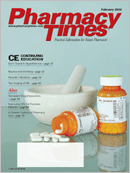Publication
Article
Pharmacy Times
A Pharmacist's Guide to OTC Therapy: Cough, Cold, and Flu Products
Author(s):
Alleviating discomfort from the symptoms associated with the cold or the flu?such as fever, chills, sore throat, congestion, sneezing, and achiness?is the common goal for many individuals. Fortunately, a plethora of nonprescription products is available on the market to help relieve the symptoms of these ailments. The 4 general categories of these agents are as follows:
- Antihistamines
- Decongestants
- Cough suppressants
- Expectorants
Whereas some products are formulated as single-entity products, many cough, cold, and flu products are formulated with multiple ingredients to treat multiple symptoms (Table). Today, nonprescription cold and flu products are formulated to address the needs for patient convenience, compliance, and ease of use. Many of the traditional formulations are still widely used, including liquids, tablets, and capsules. Now, however, there is more variety in dosage forms, including fastdissolving chewable tablets, vapor patches, and dissolvable medicated strips that are applied to the tongue.
Some new products offer a unique and convenient dosing method referred to as "spoon dosing."These products come in individually wrapped, single, premeasured doses of medication on a disposable spoon, such that they can be mixed into a beverage or administered directly from the spoon. Homeopathic products?such as Zicam (Matrixx Initiatives Inc) or ColdEeze (Quigley Corp)?also are becoming increasingly popular among many patients to aid in cold and flu treatments, and various formulations of these products are available as well.
The Role of the Pharmacist
Pharmacists are in a pivotal position to ensure that patients make appropriate product selections from the many nonprescription products available. Pharmacists should always assess a patient's medical history, current drug profile, and allergy history prior to recommending any agent. They should ensure that patients clearly understand the proper use of the medication and the correct recommended dosage, especially for the pediatric population. They should remind patients to use the dosing devices that are supplied with some products to ensure accuracy of the dosage measurement, or to purchase calibrated medication-dosing devices.
Pharmacists should ensure that patients are aware of potential adverse effects when taking cough and cold preparations, especially those that cause drowsiness or dizziness. Furthermore, pharmacists should encourage patients to seek medical consultation when needed. They also should advise patients to incorporate nonpharmacologic measures?such as the use of vaporizers, nasal irrigations, adequate hydration, and rest?into their treatment regimens to help relieve cold and flu symptoms.
Ms. Terrie is a clinical pharmacy writer based in the northern Virginia area.







